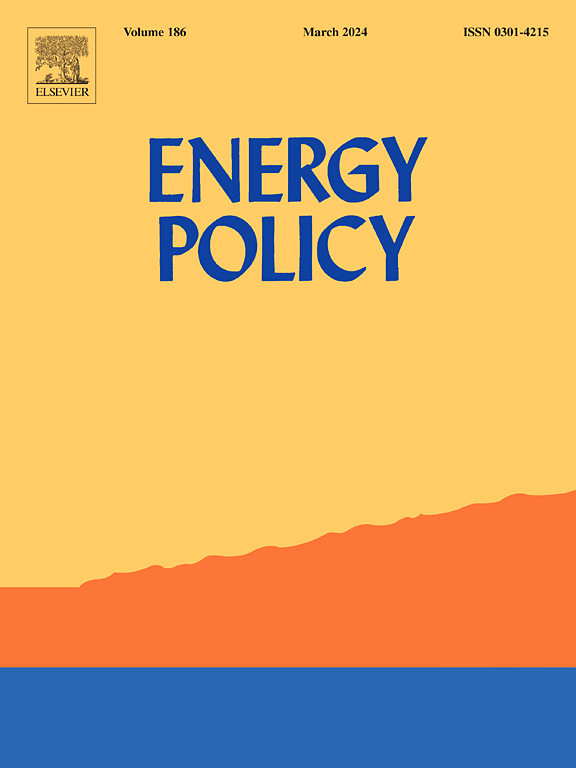单一买家模式是清洁能源部署的障碍吗?新兴和发展中国家脱碳和可再生能源供应的经验证据
IF 9.2
2区 经济学
Q1 ECONOMICS
引用次数: 0
摘要
本文比较了63个新兴和发展中国家不同电力市场模式的可再生能源发电份额和碳排放强度。利用倾向得分匹配和面板数据分析,研究了2010年至2022年间可再生能源份额和碳排放强度的变化。尽管早期的批评将单一买家模式标记为发展中国家的“危险之路”,但我们的研究结果表明,在这些国家,竞争性电力市场模式在增加可再生能源发电份额和降低碳排放强度方面并没有超过单一买家模式,这两个关键指标都表明一个国家的能源转型是否成功。此外,我们的研究结果表明,新兴和发展中国家不同市场类型的可再生能源份额和碳强度的变化更多地取决于国家背景。这些研究结果强调,需要有针对性的市场设计和监管改革,以平衡转型电力系统的效率、公平和可持续性。本文章由计算机程序翻译,如有差异,请以英文原文为准。
Is the single-buyer model a barrier to clean energy deployment? Empirical evidence on decarbonization and renewable energy supply in emerging and developing countries
This paper compares the renewable energy share in electricity generation and carbon emission intensity of different electricity market models in 63 emerging and developing countries. Using propensity score matching and panel data analysis, we examine how the share of renewable energy and carbon emission intensity have changed between 2010 and 2022. Despite early criticisms labeling the single-buyer model as a “dangerous path” for developing countries, our results show that the competitive electricity market model has not outperformed the single-buyer model in increasing renewable energy share in generation and reducing carbon emission intensity in these countries—both key metrics that indicate the success of a country’s energy transition. Additionally, our results suggest that the variability in renewable energy share and carbon intensity across market types in emerging and developing countries is more dependent on country context. These findings emphasize the need for tailored market designs and regulatory reforms to balance efficiency, equity, and sustainability in transitioning power systems.
求助全文
通过发布文献求助,成功后即可免费获取论文全文。
去求助
来源期刊

Energy Policy
管理科学-环境科学
CiteScore
17.30
自引率
5.60%
发文量
540
审稿时长
7.9 months
期刊介绍:
Energy policy is the manner in which a given entity (often governmental) has decided to address issues of energy development including energy conversion, distribution and use as well as reduction of greenhouse gas emissions in order to contribute to climate change mitigation. The attributes of energy policy may include legislation, international treaties, incentives to investment, guidelines for energy conservation, taxation and other public policy techniques.
Energy policy is closely related to climate change policy because totalled worldwide the energy sector emits more greenhouse gas than other sectors.
 求助内容:
求助内容: 应助结果提醒方式:
应助结果提醒方式:


